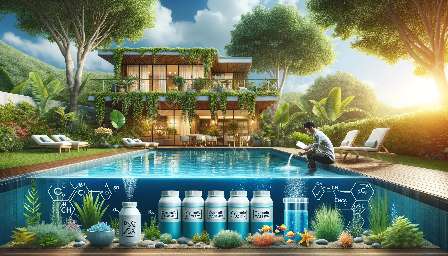Pool shock is a crucial element in maintaining a clean and safe swimming pool or spa. Understanding its role in water chemistry is essential for keeping your pool in top condition. This article will cover everything you need to know about pool shock, its benefits, application, and compatibility with water chemistry.
What is Pool Shock?
Pool shock, also known as pool shock treatment or pool shock chlorination, is the process of adding a concentrated dose of oxidizing chemicals to the pool water. This helps break down and remove organic contaminants, such as bacteria, algae, and other impurities, that regular chlorination may not eliminate fully. Shocking the pool effectively restores the balance of chlorine, ensuring the water is safe and hygienic for swimming.
Types of Pool Shock
There are different types of pool shock available, including calcium hypochlorite, sodium dichlor, and potassium peroxymonosulfate. Each type has its own unique properties and is suitable for different situations. It's important to understand which type of shock is best for your specific pool or spa, and consult with a professional if needed.
Benefits of Pool Shock
Using pool shock offers several benefits, including:
- Effective Sanitization: Pool shock effectively kills bacteria, algae, and other harmful organisms, ensuring the water remains clean and safe for swimmers.
- Enhanced Water Clarity: Shock treatments help to clarify the pool water, removing cloudiness and maintaining a sparkling appearance.
- Residual Disinfection: Pool shock can provide residual disinfection, ensuring that the pool remains sanitized for an extended period.
- Algae Prevention: Regular shock treatments prevent algae growth and help to maintain a clear and algae-free pool.
Application of Pool Shock
When applying pool shock, it's essential to follow the manufacturer's instructions carefully. Typically, the process involves broadcasting the shock treatment evenly across the surface of the pool while the filtration system is running, allowing the chemical to disperse effectively throughout the water. It's crucial to wear protective gear and handle the shock treatment with care to ensure safety during the application process.
Compatibility with Water Chemistry
Pool shock plays a critical role in maintaining the water chemistry of swimming pools and spas. By effectively oxidizing organic contaminants, it helps to restore the balance of chlorine, pH levels, and overall water quality. Understanding the compatibility of pool shock with water chemistry involves considering factors such as the type and concentration of the shock treatment, the existing chemical levels in the water, and the specific requirements of the pool or spa.
Regular testing of the water chemistry is essential to ensure that pool shock is being used effectively and that the chemical balance is maintained. This may involve testing for chlorine levels, pH balance, alkalinity, and other important factors. By understanding the interactions between pool shock and water chemistry, pool owners can effectively manage the maintenance of their pools and spas, ensuring a safe and enjoyable swimming experience for everyone.
Conclusion
Pool shock is a valuable tool for maintaining the cleanliness and safety of swimming pools and spas. Understanding its role in water chemistry, selecting the appropriate type of shock treatment, and applying it correctly are essential for effectively managing pool maintenance. By incorporating pool shock into a comprehensive water chemistry management plan, pool owners can ensure that their pools and spas remain in optimal condition, providing a welcoming and enjoyable environment for swimmers.



















